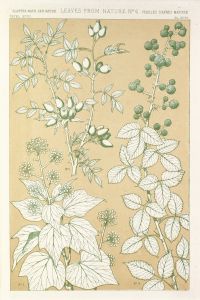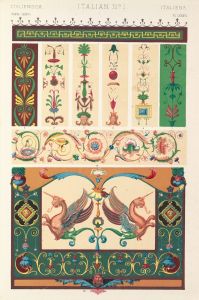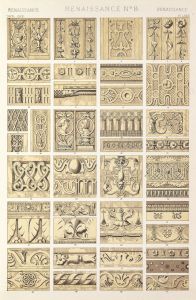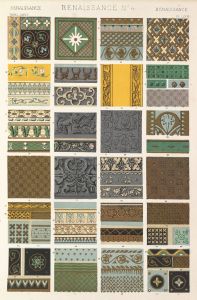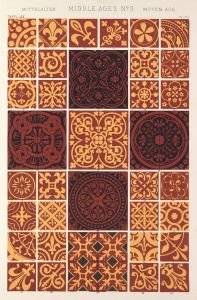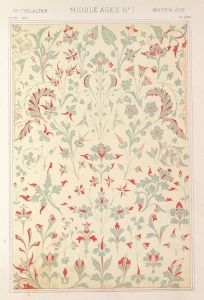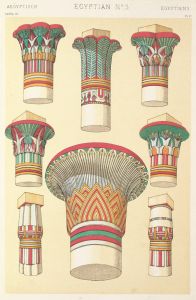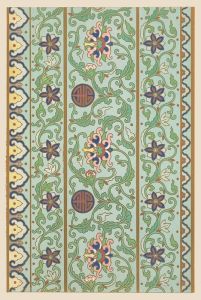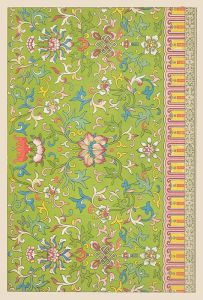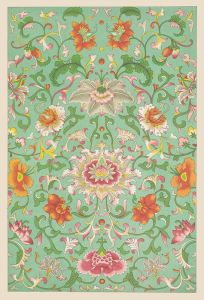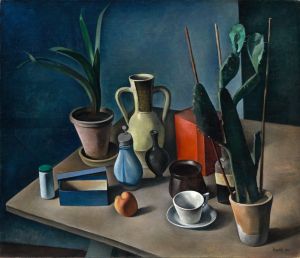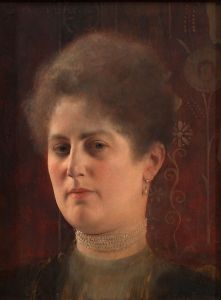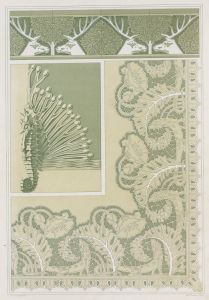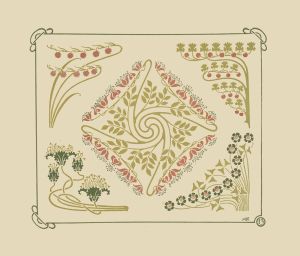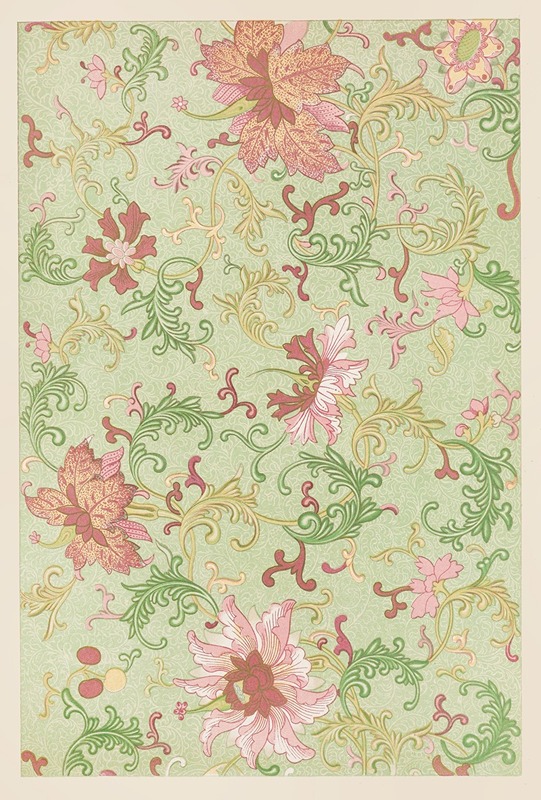
Examples of Chinese ornament, Pl.44
A hand-painted replica of Owen Jones’s masterpiece Examples of Chinese ornament, Pl.44, meticulously crafted by professional artists to capture the true essence of the original. Each piece is created with museum-quality canvas and rare mineral pigments, carefully painted by experienced artists with delicate brushstrokes and rich, layered colors to perfectly recreate the texture of the original artwork. Unlike machine-printed reproductions, this hand-painted version brings the painting to life, infused with the artist’s emotions and skill in every stroke. Whether for personal collection or home decoration, it instantly elevates the artistic atmosphere of any space.
"Examples of Chinese Ornament, Pl.44" is a plate from the influential design book "The Grammar of Ornament" by Owen Jones, first published in 1856. Owen Jones was a British architect and designer who played a significant role in the development of design theory in the 19th century. His book is a comprehensive collection of design patterns and motifs from various cultures around the world, intended to serve as a resource for designers and artists.
"The Grammar of Ornament" contains 100 color plates, each illustrating a different style of ornamentation. Plate 44 specifically focuses on Chinese ornamentation, showcasing the intricate and symbolic designs characteristic of Chinese art. The designs in this plate are drawn from a variety of sources, including textiles, ceramics, and architectural elements, reflecting the rich visual language of Chinese decorative arts.
Chinese ornamentation is known for its use of symbolic motifs, vibrant colors, and intricate patterns. Common themes include natural elements such as flowers, birds, and animals, as well as geometric patterns and calligraphic elements. These designs often carry deeper meanings, with specific motifs symbolizing concepts such as prosperity, longevity, and harmony.
In Plate 44, Jones meticulously reproduces these elements, highlighting the elegance and complexity of Chinese design. The plate features a range of patterns, from the flowing lines of floral motifs to the precise geometry of lattice work. Each design is rendered in vivid colors, capturing the aesthetic qualities that make Chinese ornamentation distinctive.
Jones' work was groundbreaking in its approach to design education. By compiling and categorizing these diverse styles, he provided a valuable reference for designers looking to incorporate historical and cultural elements into their work. His emphasis on the principles of design, such as symmetry, contrast, and harmony, helped to establish a foundation for modern design theory.
"The Grammar of Ornament" remains an important resource for historians, designers, and artists. Plate 44, with its focus on Chinese ornamentation, offers a glimpse into the rich artistic traditions of China and serves as a testament to the enduring appeal of these designs. Through his careful documentation and analysis, Owen Jones helped to preserve and promote an appreciation for the beauty and complexity of Chinese decorative arts.





